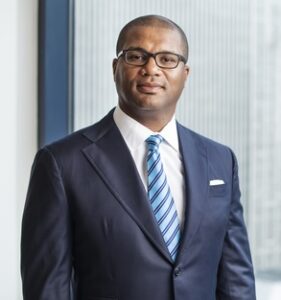Looking back on your first year at Tradeweb, what themes or shifts in the market have stood out most to you?
 At the core of what Tradeweb does is advancing technology to make markets more efficient over the long term. We spend a lot of time with clients to understand their pain points, helping to make markets work better – both for the growth of global economies and from a revenue generation standpoint.
At the core of what Tradeweb does is advancing technology to make markets more efficient over the long term. We spend a lot of time with clients to understand their pain points, helping to make markets work better – both for the growth of global economies and from a revenue generation standpoint.
Looking back, there was once an intense fear about what technology might do to revenue generation. Encouragingly, we’ve seen technology create efficiencies that drive greater flows, faster information transfer, and new revenue opportunities. Fifteen years ago, if the fixed income business made three or four billion dollars in an entire year, that would have been considered a phenomenal outcome.
Today, it’s generating four to five billion dollars per quarter. A major driver of that growth is the electronification of markets and the influx of new technology that has driven enhanced efficiency, transparency, and volume.
We’re also seeing our clients increasingly managing portfolios across regions, time zones, and products that were once fairly isolated. The barriers within the client base have come down, giving rise to a much more global outlook where multiple products are traded seamlessly across multiple time zones and regions.
How is data and pricing analytics, artificial intelligence and algorithmic execution strategies changing how traders make decisions day-to-day?
Trading strategies are increasingly being transformed by the rise of data and pricing analytics, artificial intelligence, and algorithmic execution. We’re now taking the massive amount of data accumulated over time and using it to create predictive analysis.
Historically, data was used primarily to aid execution, but we’re now leveraging it to optimise dealer selection and pricing models. For example, our SNAP+ feature uses historical trade data and advanced algorithms to quickly identify the optimal dealer set for a given trade, helping to improve execution quality while reducing costs and increasing trading efficiency.
Through this data analysis, it’s becoming increasingly clear that there is a quantifiable benefit to using technology and electronic execution. I think 2026 will be a watershed moment for understanding how critical data has become and what it will mean for markets over the long term.
AI is a slightly different animal. What has become clear is that AI will serve as a powerful input to processes. It won’t replace the investor, but it will make the implementation of processes much more seamless, and therefore, enhance productivity across our markets.
Algorithmic trading has also been an interesting evolution. There’s now a tremendous amount of data feeding into and being generated by algo strategies. Tradeweb has been building an ecosystem where liquidity, information and algos are interconnected.
Recently, we unveiled a partnership with JP Morgan and Morgan Stanley to bring their algos onto our platform. You can expect to see more of that as we continue to integrate algos onto the platform to create an “algo liquidity hub” to execute across multiple asset classes.
Markets have become increasingly interconnected – how is that influencing trading behaviour and the way clients manage risk?
As markets become more interconnected, clients are increasingly looking to trade multiple assets across platforms and regions. Our ethos has always been to work closely with clients to address their challenges through technology – never build for the sake of it.
This focus has driven significant investment in technology to enable seamless execution, such as trading ETFs alongside investment-grade credit on the same user interface. We’re also starting to see hedge execution taking place on the same platform. Three years ago, this wasn’t something that could happen, but by offering a broader scope of asset classes, clients now have access to those capabilities.
We’re also seeing certain trading protocols evolve and extend into other markets. For example, we’re beginning to apply insights from our credit space to mortgages, and from swaps to credit. It’s creating a very interesting circular dynamic where innovations, protocols and efficiencies in one market feed into and strengthen other markets.
How do you see digital assets reshaping institutional markets? What’s the biggest opportunity right now in connecting traditional markets with digital?
The current US regulatory stance on digital assets has definitely accelerated how market participants are approaching the space – it’s now a constant topic of conversation across the industry.
While blockchain itself isn’t a new technology, having been around for a decade, we’re now seeing real implementation driving growth in both digital assets and the overall market. Whether it’s tokenisation or building rails for private credit, blockchain technology will be at the forefront.
Distributed ledger technology will also form the backbone of how digital markets continue to evolve. We’ve reached the point where any firm that hasn’t started to define its footprint in digital assets risks falling behind the curve.
Looking ahead, what excites you most about where Tradeweb and global markets are headed?
Part of the reason I joined Tradeweb was because of the growing electronification of markets and the unique position Tradeweb has within that ecosystem. To put things in perspective, the US Treasury market is still around 40% traded by voice. We believe one of the ongoing challenges – and opportunities – is continuing to bring that number down.
Looking ahead, I see significant change on the horizon through further electronification, AI, algorithmic trading, private credit, digital assets and crypto. There are still vast green fields of opportunity across global markets, and that’s what makes this next phase so exciting for Tradeweb and for the industry as a whole.